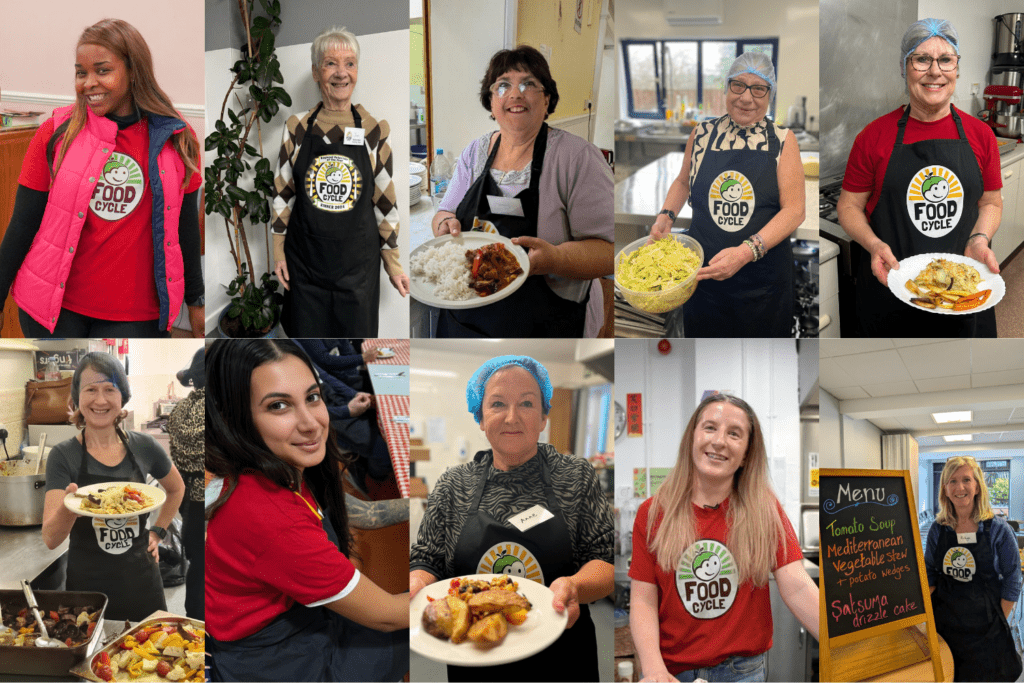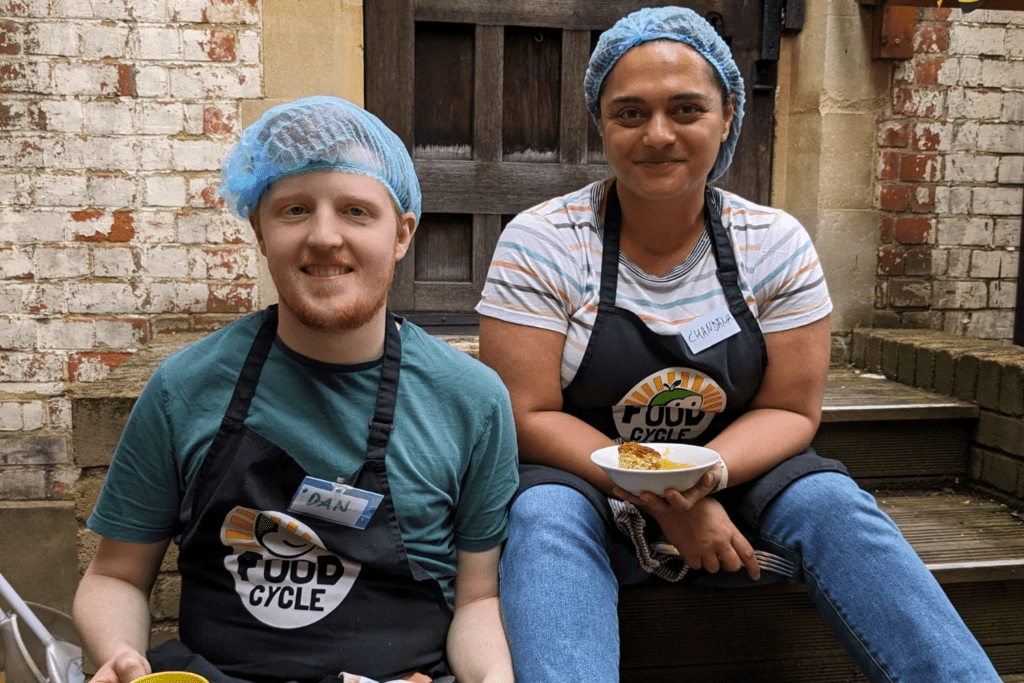This week we have a guest post from Matt Cockrean, an avid FoodCycler in Sheffield. Not content with cooking up a storm in the kitchen, they created a FoodCycle Kitchen garden. In this post Matt describes what the FoodCyclers of Sheffield have been getting up to.
With a small discovery similar to Bingham’s uncovering of Machu Picchu in 1911, the St Bart’s hub in Sheffield has discovered a gem of their own.
Back one fine day in November 2014, a swat team of Food Cycle volunteers and guests voyaged into the unknown; armed with nothing but machetes, thick coats, a packet of digestives and a bucketload of well-brewed Yorkshire Tea.
Taking huge swipes to clear the thick overgrowth, a staircase began to reveal itself, leading round a corner and up a steep hill. With little sight of what they would be greeted with at the top, the team worked tirelessly to reach the summit.
As many a laborious hour of cutting, shredding and bagging the unwanted plant life went by – old stone and brick work laid by a previous generation was found in the formation of what was believed to be growing terraces.
The terraces were disguised by a deep layer of couch grass that had engulfed absolutely everything in its path. Over the coming weeks, a battle was had with the dreaded weed, leaving the beds ready for turning.
Hoping there hadn’t been any burials in the area (it is in church grounds after all!), the team spent weeks turning tons of earth; sieving out rocks, broken glass, carpets, pieces of metal and even a fuse box!
After the beds were covered in carpet from a house refurb nearby, a donated compost bin was put in place for FoodCycle peelings and a mammoth water butt installed. The space was then ready for the season ahead.
Once the weather started to hot up and the time was right, the team propagated seeds that were lovingly donated from the people at the Garden Style nurseries in Loxley, Sheffield.
When they were strong enough, the seedlings were planted and grew rapidly over the coming months – leaving the team to keep on top of weeding, tidying, pruning and planting flowers.
Harvest time came and the beetroot, beans, potatoes, tomatoes, leeks, onions and rhubarb was shared out between the volunteers, who had not only gained delicious home-grown food to eat; but new friends and a heightened sense of well-being.
All of this was achieved in just the first year of the project, but as plans are already forming for the coming year ahead, it’s set to be even better and more bountiful that the year past.
To be continued…




